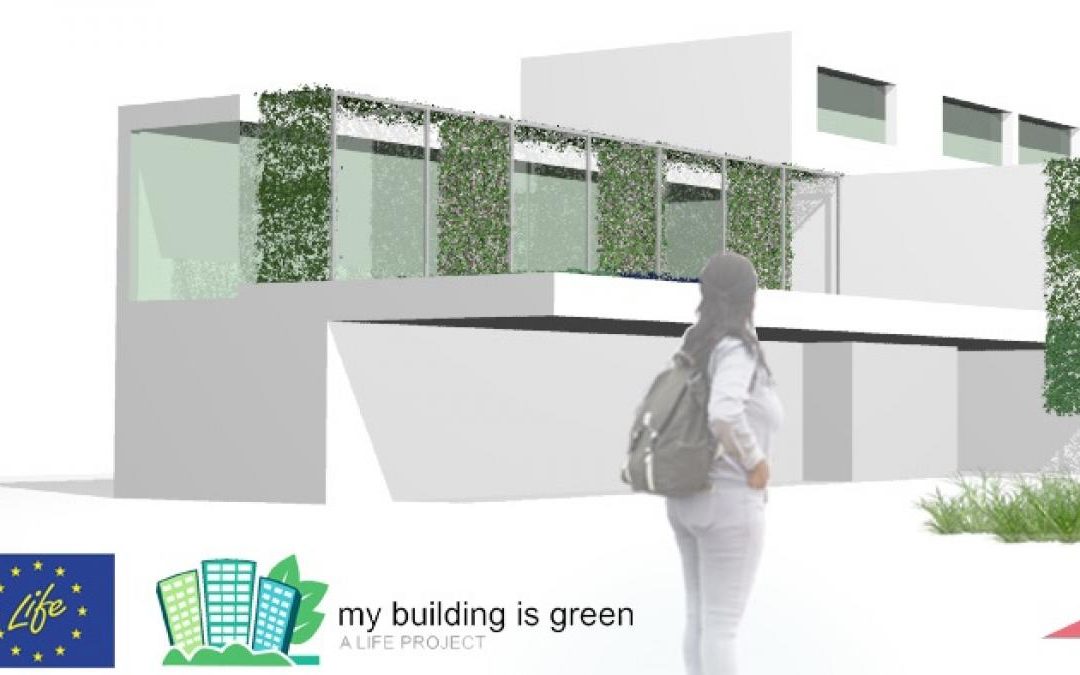Pre-scholar and primary school (CEIP) Gabriel de Solana de los Barros, located in Badajoz (Spain), has just started with the implementation of Nature Based Solutions in its facilities, which lets them to reduce the negative effects of the climate changes. These works are included in the European project myBUILDINGisGREEN, of which CARTIF takes part.
After a study and analysis of their facilities, the Development Sustainability and Rural area of Badajoz’s Council will start the works to improve the pilot CEIP Gabriel Mistral de Solana de los Barros during the next months, in order to realize of all these changes in the academic centre from next September.
Some reasons why this academic centre had been chosen were technical aspects about the configuration and characteristics about its roof, front of building and orientation of the building. After this, the design of the implementation project has been developed and written in an implementer calendar that will last five months.
The main objective of the European project LIFE myBUILIDINGisGREEN is apply Nature Based Solutions in schools and social centres to obtain greater resilience and better adaption of climate change. In this way, the conditions and durability of those centres will get better.
Sustainability roofs and bioclimatic rooftops, green sustainability and efficient zones up to implementation of natural ventilation formulas and seasonal shading structures are some of the designs who had been making in the project LIFE myBUILDINGisGREEN.
The European project LIFE-myBUILDINGisGREEN, in which CARTIF take part, with Badajoz’s Council, the Science of the Constructions High School Eduardo Torroja (IETcc-CSIC), the Intermunicipal Community of Alentejo Central (CIMAC), and the Municipal Camera of Oporto, coordinated by Real Jardín Botánico of the Consejo Superior de Investigaciones Científicas (Spanish National Research Council) expect contribute to increase the resilience of those academic and social centres according to the implementation of Nature Based Solutions as climate adaptation prototypes and get better their well-being.
Some of the expected results from this idea are the climate adaptation from three pilot facilities through the prototype implementation from Nature Based Solutions, the 20% reduction of CO2 emissions per year, the 7% reduction of NOx emissions per year, the 50% reduction of water consuming at risk, or the 50% reduction about the cost from energy or refrigeration, and the 10% from the heating.
